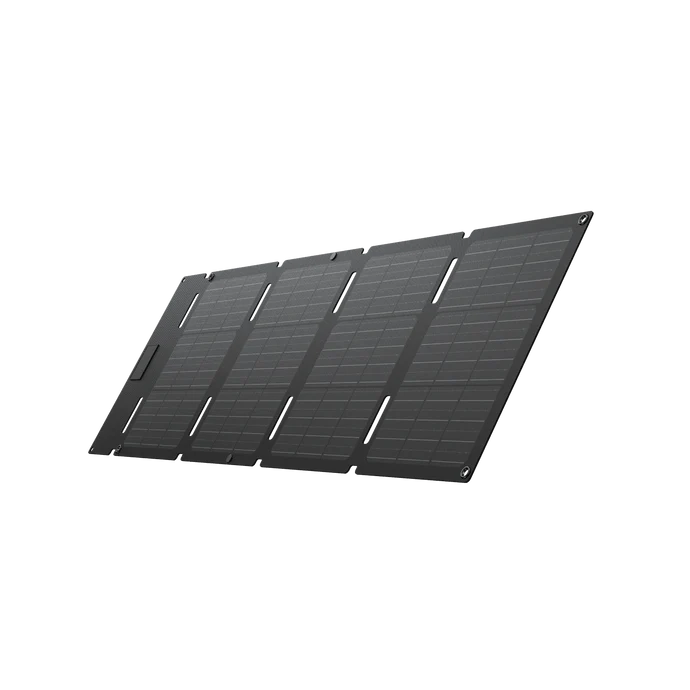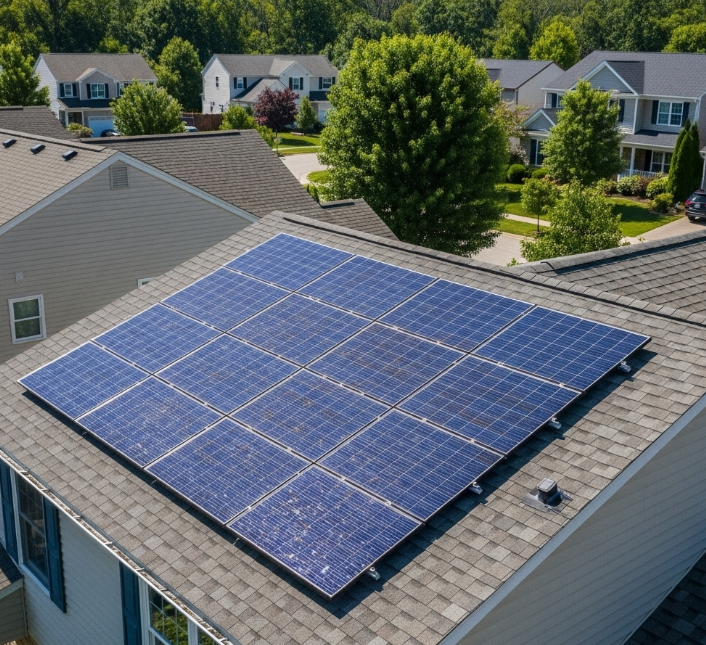Does the State of Oregon Pay for Solar Panels
- What “Paying for Solar Panels” Means
- State-Level Solar Programs in Oregon
- The 30% Federal Solar Tax Credit
- Other Key Oregon Benefits: Utility Rebates, Net Metering, and Property Tax Exemption
- How to Calculate Your Costs and Savings
- Put Oregon's Solar Incentives to Work!
- FAQs About Paying for Solar in Oregon
For Oregon residents, the question isn't whether the state provides free solar panels—it doesn't. The real question is how much you can save through available programs. Oregon offers a strong network of financial incentives, including state rebates and federal tax credits, that work together to lower the upfront cost of going solar. This assistance makes it a realistic and financially sound choice for many homeowners.
What “Paying for Solar Panels” Means
To properly answer whether Oregon "pays for" solar panels, we first need to clarify what that phrase really means in this context. It doesn't mean the government will give you a free system or that an installer will show up and put panels on your roof at no charge.
Instead, “paying for” refers to a collection of programs where the government covers a significant portion of the cost. Think of it as the state and federal governments helping you pay by contributing a large part of the total price. This assistance comes in different forms. For example, a rebate acts as an instant discount, lowering your initial expense. A tax credit is a dollar-for-dollar reduction on what you owe in income taxes. Both are methods the government uses to effectively hand you money, making the project much more affordable.
So, while the state doesn't pay for the entire system, it provides powerful financial tools to substantially cut the final price you pay.


State-Level Solar Programs in Oregon
Oregon provides two main state-level opportunities that can significantly lower your solar installation costs. A key point for homeowners is that these programs are not mutually exclusive; if you qualify, you can often combine the benefits from both for maximum savings.
Oregon Solar + Storage Rebate
This is a statewide rebate available to nearly all Oregonians, regardless of who your utility provider is. It's run by the Oregon Department of Energy (ODOE) and is paid directly to your approved contractor, who passes the savings to you by reducing your total bill.
Rebate Amount:
The amount you receive depends on your income level and system size.
For most households, the rebate is calculated on a per-watt basis, with a maximum of $5,000 for the solar panels.The wattage can be calculated based on the parameters of the solar panel
If you add a battery, you can receive an additional rebate of up to $2,500.
For low- to moderate-income families, the per-watt rate is much higher, making it possible to reach the $5,000 maximum with a smaller, more typical residential system.
How to Qualify:
You must use a contractor from the ODOE-approved list. The program is very popular and operates on a first-come, first-served basis, so it’s wise to confirm with your installer that funds are still available.
Energy Trust of Oregon Incentives
In addition to the statewide ODOE rebate, if your electricity provider is Portland General Electric (PGE) or Pacific Power, you have access to a second set of powerful incentives through the Energy Trust of Oregon.
Standard Rebate:
For most customers, the Energy Trust offers a simple, flat-rate cash incentive. For 2025, these amounts are:
$900 for PGE customers.
$1,050 for Pacific Power customers.
Solar Within Reach (For Income-Qualified Households):
If your household meets certain income requirements, you can apply for this enhanced incentive instead of the standard rebate. It offers a much larger rebate, calculated per watt, that can provide up to $6,600 toward your system. This program is specifically designed to make solar accessible to more families.
Bundling Other Upgrades:
The Energy Trust also encourages combining your solar project with other energy-efficiency improvements, like upgrading your insulation or water heater, and may offer separate incentives for those as well.


The 30% Federal Solar Tax Credit
On top of the state-level savings, all Oregon homeowners can use the most significant solar incentive available: the federal Residential Clean Energy Credit.
Credit Basics: 30% of Your System Cost
This powerful credit allows you to subtract 30% of your total system cost directly from the federal taxes you owe. For example, on a $20,000 system, this provides a $6,000 reduction in your tax bill. The credit applies to the entire project, including panels, installation labor, permitting fees, and even battery storage systems.
How Rebates Affect Your Federal Credit
A critical detail to understand is how this federal credit interacts with the local incentives mentioned earlier. Rebates from your utility company (like PGE or Pacific Power) are generally considered a price reduction. You must subtract the utility rebate amount from your total system cost before calculating your 30% federal credit. However, tax incentives from the State of Oregon typically do not reduce your cost basis for the federal credit. This distinction is a significant advantage for maximizing your total savings.
Who Qualifies and How to Apply
To be eligible, you must own the system (through a cash purchase or a loan), not lease it, and the home can be your primary or secondary residence. Claiming the credit is a straightforward part of filing your annual taxes using IRS Form 5695. It's important to note that the 30% rate is available for systems installed through the end of 2032, after which it is scheduled to decrease.


Other Key Oregon Benefits: Utility Rebates, Net Metering, and Property Tax Exemption
Once you have a clear picture of the primary state programs and the 30% federal tax credit, a third layer of savings comes into play. These additional Oregon-specific benefits are crucial for calculating your total return on investment.
Utility-Specific Rebates
While customers of PGE and Pacific Power receive incentives through the Energy Trust, other municipal utilities offer their own programs. It's always best to check directly with your provider, but here are two key examples for 2025:
- Salem Electric: Customers can receive a rebate of $300 per kilowatt (kW) of installed solar capacity. This incentive is capped at $1,500 per system.
- Eugene Water & Electric Board (EWEB): EWEB offers a rebate of $0.40 per watt, up to a maximum of $2,500. It is important to note that EWEB's solar program funds are limited and are often fully claimed early in the year, so timely application is critical.
Net Metering
This is a uniform, statewide policy in Oregon and a major long-term financial benefit. Net metering is a billing arrangement where you receive a credit for any surplus electricity your solar panels generate and send back to the grid. For instance, on a sunny day when you produce more power than you use, your utility meter effectively runs backward. These credits are then applied to your bill, offsetting the cost of electricity you draw from the grid at night or on cloudy days.
Property Tax Exemption
Normally, a valuable home improvement like a solar installation would increase your property's assessed value and, therefore, your property taxes. However, Oregon state law provides a 100% property tax exemption for the value added by a renewable energy system. This ensures that your investment in clean energy will not result in a higher annual property tax bill.
How to Calculate Your Costs and Savings
After learning about the various incentives, the most important question is what it all means for your wallet. Let's walk through the exact calculation for a typical $16,000 solar system for a PGE customer in Oregon to find the real, out-of-pocket cost.
Step 1: Apply the Utility Rebate
The first incentive to account for is the rebate from your utility company, as it's considered a direct price reduction. For a PGE customer, this is $900.
This new amount is the cost basis used to calculate your federal tax credit.
Step 2: Calculate the Federal Tax Credit
Next, you calculate the 30% federal tax credit based on the result from Step 1.
This is the total amount you will be able to subtract from your federal income taxes.
Step 3: Determine Your Final Out-of-Pocket Cost
Finally, to find your true out-of-pocket cost, we take the original price and subtract all the incentives you are receiving: the utility rebate, the state rebate, and the federal credit you just calculated.
As you can see, the available incentives in this common scenario cover over 40% of the initial price.
Put Oregon's Solar Incentives to Work!
While Oregon does not pay for solar panels in full, its robust and layered system of financial incentives makes the transition affordable. By combining state rebates, the 30% federal tax credit, and local benefits like net metering, homeowners can cut their initial costs by 40% or more. This turns a significant expense into a wise long-term investment that pays for itself over time. The crucial next step is to consult a certified solar contractor who can provide a detailed quote and guide you through the application process for these valuable programs.
FAQs About Paying for Solar in Oregon
Q1: Can I combine multiple incentives?
Yes, absolutely. Combining incentives is the key to making solar affordable in Oregon. A typical homeowner will "stack" the federal tax credit on top of a state rebate from the ODOE and, if eligible, another cash incentive from their local utility like the Energy Trust. Your solar installer will help you apply for each program you qualify for to maximize your total savings.
Q2: Are there any solar options if I rent or my roof isn't suitable?
Yes. Oregon's Community Solar Program is designed for this situation. It allows you to subscribe to a portion of a large, local solar project built elsewhere in your utility's territory. You then receive a credit on your monthly electricity bill for the power your share generates. This provides the financial benefits of solar without requiring you to own property or install any equipment yourself, making it a great option for renters.
Q3: What if the 30% federal tax credit is more than the taxes I owe?
You will not lose the extra value of the credit. The federal solar tax credit is "non-refundable," meaning it can only reduce your tax liability to zero for the year. However, if your tax credit is larger than what you owe, the remaining amount automatically carries forward to the next tax year. You can continue to carry it forward for multiple years to ensure you receive the full 30% benefit.